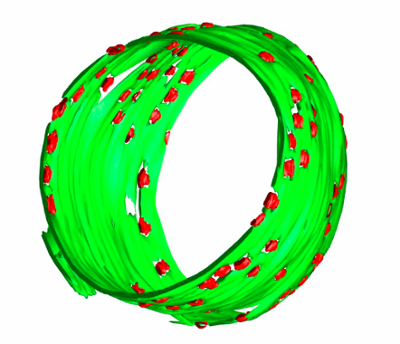

Author: Katharine Ullman
Our DNA is wrapped in a bubble, a double membrane called the nuclear envelope, which protects it and directs molecular traffic to and from the nucleus. Many natural processes, such as cell division, create holes in the nuclear envelope, and for years, scientists have puzzled over how these gaps are filled. New research from the Department of Biochemistry and Department of Oncological Sciences has helped to elucidate this process, finding how an ancient pathway is recruited to do the job.
The nuclear envelope is essential to protect DNA but also presents a problem. During cell division, an intact nuclear envelope would get in the way, preventing duplicated chromosomes from separating into individual daughter cells. To get around this, cells temporarily break apart their nuclear envelope. Then, after chromosomal division is complete, the nuclear envelope reforms around the DNA. Researchers have been studying the cellular machinery involved in repair at this stage.

Previously, a group of enzymes known as ESCRT-III proteins were discovered to be involved in fixing holes that form in the nuclear envelope. However, the proteins that recruit the ESCRT pathway remained a mystery. To approach this problem, University of Utah researchers, together with researchers from University of California, San Francisco, studied two very different models of cell division, yeast and human cells. They showed that, in fact, the mechanism of nuclear membrane repair in both organisms was almost identical. To patch holes in the nuclear envelope, an adaptor protein called LEM2, known to be a membrane protein housed in the nuclear envelope, recruits the ESCRT-III protein CHMP7. Associated ESCRT machinery then repairs gaps that remain in the nuclear envelope. Now that scientists understand how this pathway works, they can study where nuclear envelope repair goes wrong in diseases, like cancer.
-written by Meredith Hasenoehrl